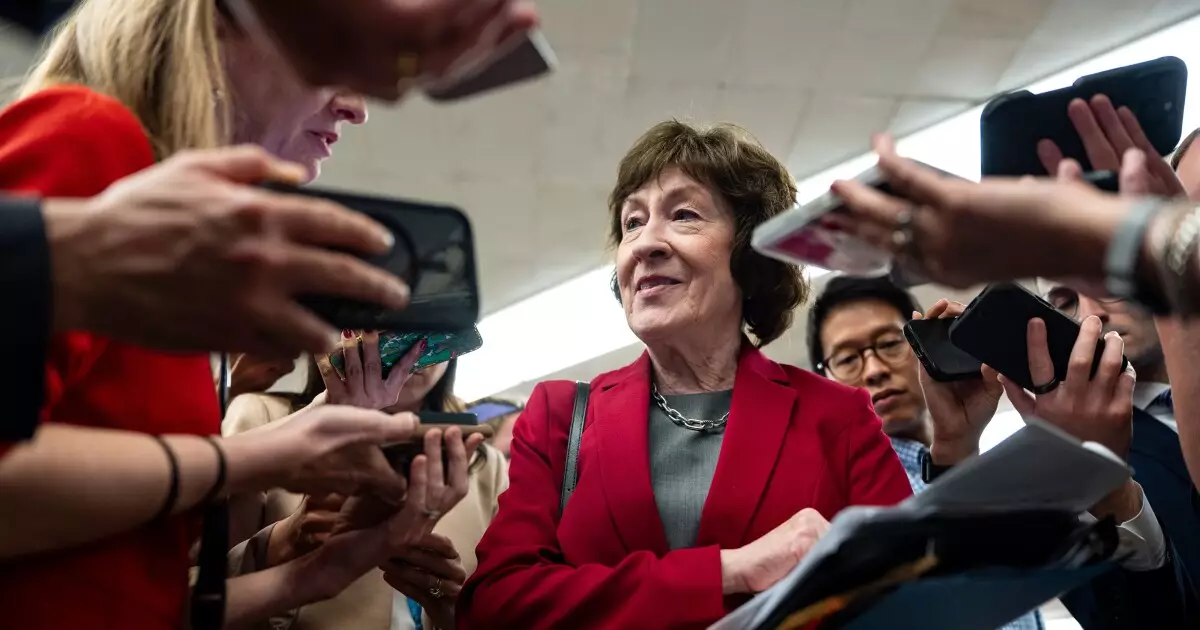The recent approval of bipartisan appropriations bills by the Senate might appear as a step toward normalcy in our government’s fiscal process, but this superficial progress conceals underlying Republican concerns over unchecked government spending. While Senate leaders trumpet this achievement as a constitutional win—emphasizing the power of the purse—the reality indicates an incomplete and fragile effort to rein in government expenses. The looming threat of a government shutdown in October highlights the superficiality of these so-called bipartisan successes. They are, at best, temporary band-aids on a deeply fractured fiscal system that continues to rely on stop-gap measures rather than meaningful spending reform.
Even as some bills edge closer to approval, the fact remains that nine of the twelve annual appropriations remain unresolved. The political tug-of-war between the House and Senate, along with the White House’s tendencies toward executive override, suggest that prolonged fiscal inertia and political brinkmanship will likely dominate until a crisis forces more decisive action. This continued reliance on temporary funding solutions erodes the principles of fiscal responsibility, replacing them with political expedients that threaten the stability of vital sectors like transportation, healthcare, and energy.
Government Shutdowns No Longer Just Political Theatre—They Are Economic Threats
The potential for government shutdowns is no longer merely a partisan spectacle; it poses real risks to economic stability and public confidence. When federal funds for infrastructure, healthcare, and urban development disappear, states and municipalities suffer immediate consequences. Emergencies are left unaddressed; vital projects are halted; and businesses face economic uncertainty. For a market that relies heavily on federal assistance—municipal bonds, in particular—these shutdowns cause ripple effects that threaten to burst the fragile bubble of local investment.
Sequestration and automatic cuts further exacerbate the problem, especially for direct-pay bonds such as Build America Bonds. These are already on the chopping block, and without a new appropriations bill, automatic sequestration will cut spending by approximately 5.7%. This is not just a technicality; it translates into tangible, adverse effects on infrastructure projects that Americans rely on daily. The administration’s executive order mandating sequestration disregards the importance of stable, predictable government funding—further entrenching uncertainty in crucial sectors.
Partisanship Continues to Undermine Fiscal Reform
While some Senators laud the passage of appropriations bills as bipartisan achievements, it would be naive to ignore the broader context. The truth is that these bills are largely consensus-based, avoiding deeper fiscal cuts that might have forced structural reforms or curtailed runaway spending. In fact, many of the bills incorporate modest increases—such as a 1% rise over 2025 levels for agriculture—demonstrating that the commitment to fiscal conservatism remains superficial at best.
The fact that the House and Senate continue to diverge over key issues—such as funding for the Department of Housing and Urban Development—highlight the ongoing ideological discord. The House’s proposed cuts and the Senate’s more moderate approach suggest a widening gap that will need to be bridged, but such negotiations are often designed to avoid real fiscal discipline rather than enforce it. The accompanying debate over the location of the FBI headquarters and other politically charged issues only serve as distractions from the core fiscal crisis: unchecked government growth that burdens taxpayers and stifles economic vitality.
The Illusion of Legislative Progress Amid Uncertainty
This legislative “progress” offers only the illusion of control at a time when American fiscal policy desperately needs to confront its own excesses. The appropriations process, overshadowed by political brinkmanship, reveals the inability of Congress to prioritize responsible spending. Instead of tackling structural deficits, lawmakers are content with incremental increases and short-term fixes that ultimately kick the can down the road.
The bipartisan approval of these bills does little to hide the fact that lawmakers, especially in the Senate, are operating under pressure to meet political timelines rather than fiscal realities. The upcoming return of Congress in September will be marred by urgent negotiations driven by the threat of shutdowns, which ultimately serve the interests of political posturing more than sound governance. Absent genuine fiscal reforms remains an uncomfortable truth: superficial bipartisan gestures will not solve the fundamental issues of spending sprees, deficits, and national debt.
In this landscape, it’s clear that piecemeal appropriations and political compromises are not enough to ensure sustainable governance. The myth of bipartisan consensus masks a deep-rooted inability to confront the structural fiscal challenges facing the nation. Without a decisive shift toward responsible spending and strategic reforms, these band-aid measures threaten to unravel the economic stability that America urgently needs.


Leave a Reply